We planned for a day trip to a place called Palaikeri, a fisheries department run fishing cooperative, during the Pooja holidays but destiny had something else in store for us. We started at about 7:30 am and drove down to Thripunithura, a suburb of Ernakulam. On the way, we decided to stop by at the famous Thripunithura Hills Palace Museum.

The Hill Palace, Kerala’s first heritage museum noted for royal collections of the erstwhile Maharaja of Kochi, is today the largest archaeological museum in Kerala. Built in 1865, the palace complex consists of 49 buildings in the traditional architectural style of Kerala, sprawled over 52 acres. On display in the full-fledged Ethno-archaeological museum are oil-paintings, murals, sculptures in stone and manuscripts, inscriptions, coins, belongings of the Kochi royal family and royal furniture including the simhasana (throne). Also exhibited are over 200 antique pieces of pottery and ceramic vases from Japan and China, Kudakkallu (tomb stone), Thoppikkallu (hood stone), menhirs, granite, laterite memorials, rock-cut weapons from the Stone Age, wooden temple models, plaster cast models of objects from Mohenjodaro and Harappa of the Indus Valley Civilisation. The museum also houses a gallery of contemporary art.
The architecture, the gardens and the ambiance was truly grand. The solid gold crown with valuable stones inlaid was the highlight of the exhibits. There is a Durbar Hall where the erstwhile King of Kochi decided to join the Indian Union and the first Princely state in India to do so.
We started to the Palaikari fisheries village and with difficulty we found the place tucked away in a by-lane. But we were not lucky, the place had exceeded its daily quota of people they can cater to. We were in a quandary and wondering where to go. I called up a good friend and he advised us to go to Fort Kochi. I have been to Fort Kochi quite a few times and my friends had visited once a long time back. We reached Fort Kochi at around 2 pm and our first visit was to the Jewish Synagogue in the Jew Town. We found the synagogue closed and the staff gone for lunch. We walked down to the nearby Udupi restaurant and had a very simple lunch, and topped it off with ice cream as desserts. We walked down to the Dutch Palace. It contains one of the most beautiful mural collection in Kerala. The exquisite murals are a delight and hats off to the masters whose works still survive from the 17th-18th centuries.
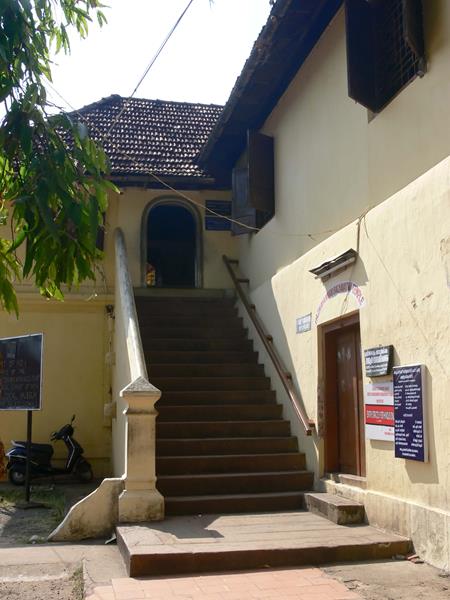
Dutch Palace / Mattancherry Palace – (Though the Dutch Palace has been named so, it was the Portuguese who built it and the Dutch merely did some cosmetic renovations and repairs). During the early decades of the 16th century, the Portuguese had plundered many temples in Kochi. In 1555, they built the palace and presented it to King Veera Kerala Varma with the hope of establishing trading relations with the kingdom. The palace is a two-storied structure, built in traditional Kerala naalukettu (quadrangular) model with four separate wings opening into a central courtyard. While the central courtyard houses a temple of the royal deity Pazhayannur Bhagavathi. The walls of the palace interiors decorated with intricate mythological mural paintings in rich warm colours. The mural paintings in the Royal Bed Chamber depict the entire story of Ramayana. The painting covers about 100 square meter and it is believed to be done between the 17th and 18th century. The murals that adorn the staircase walls are of Hindu gods and goddesses while the Royal Ladies room on the ground floor has paintings depicting the story of Kumarasambhavam by the great writer Kalidasa. There are five other panels in the room depicting Krishna Leela and Shiv Leela.
We walked back again to the Jewish Synagogue and we were amazed by the history of the synagogue, and the history of the Kerala Jews. There are a few Jews still living in Kochi.
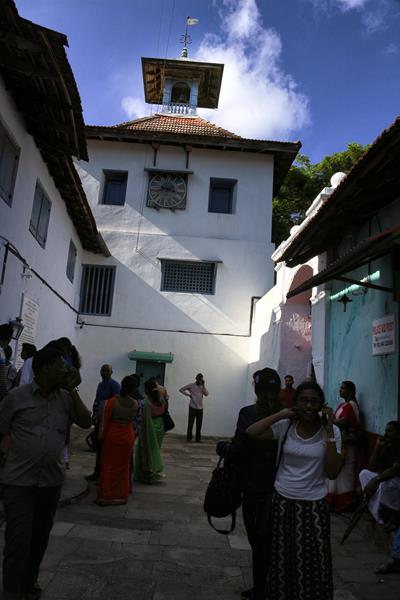
Mattancherry / Paradesi Synagogue – The Jews of Fort Kochi, who fled their homeland – Israel during the Diaspora embraced Fort Kochi as their second home. The synagogue is situated at one end of the Jew Street in the Jew Town enclave of Mattancherry in Fort Kochi. It was built in 1568 by the Malabar Yehudans or Cochin Jewish community on the land gifted by King Rama Varma. The clock tower was built in 1760 by Ezekiel Rahabi an affluent Jewish businessman. Inside the synagogue, the décor is complete with the glass chandeliers and blue willow-patterned Chinese floor tiles. The Scrolls of the Law is housed here and the several gold crowns received as gifts and the brass-railed pulpit, and the copper plates proclaiming the privileges of the Jews of Kerala written in Tamil. Most of the Jewish settlers here have now left for their homeland—Israel.
We got to meet some interesting Kashmiri shopkeepers, who have made Kochi their home and selling curios to tourist. They offered us tea, we politely declined. Got back to our car and drove down to Fort Kochi Beach. We parked our car in Vasco da Gama square and walked around the place. It was teaming with travellers, street vendors, street salesmen, tea-shops, fishermen, tourists, and touts. The square was also a venue for a religious equality event organised by some local activists. We were drowned in the sights, the sounds, the smells, and the carefree environment of the beach. Walking down the beach, we saw the sun slowly setting in the west into the Arabian Sea. What a spectacular ending to a beautiful day!
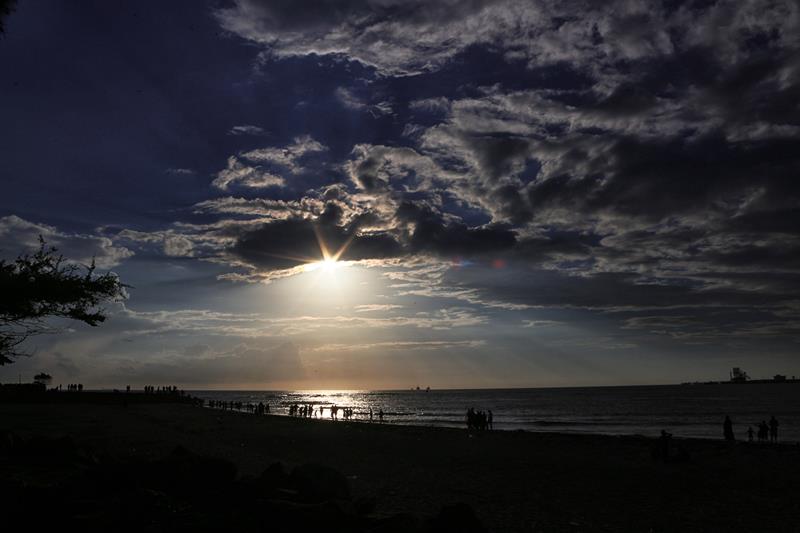
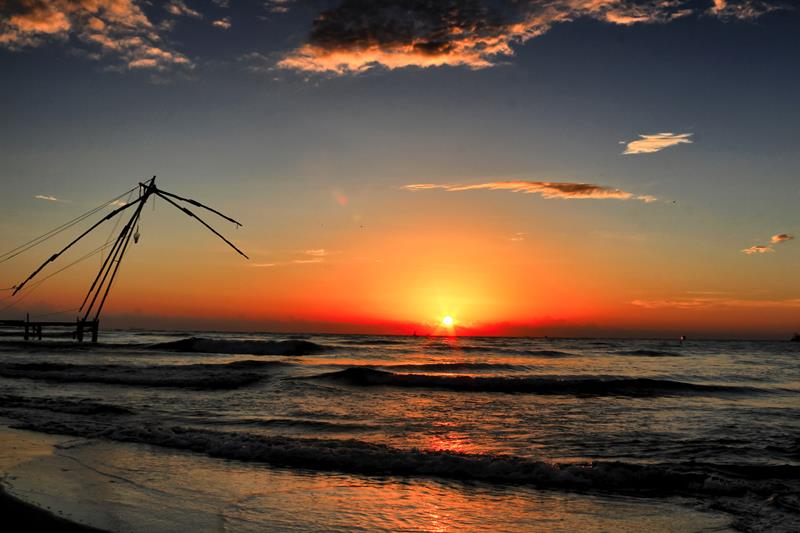
It was about 6:45 pm and we thought it was not prudent to drive back to Thrissur. We stayed at the Tom’s Old Mansion homestay after approaching a couple of Realindia listed homestays. It was a clean place and priced quite reasonably. After freshening up, we walked back to the Vasco da Gama square and went shopping for clothes for the next day (we thought it would be just a day trip). There was an open restaurant and we had our dinner. The food was okay, but the service took a long time and that was a blessing in disguise to rest our weary legs. Later, we popped by the beach and watched some ships coming into the harbour and leaving to distant lands. It was a long day and we went back content to our homestay.
We woke up at 5:30 am the next day, and again left to the beach to see the sunrise, but the East being inland it was not so spectacular as the sunset.
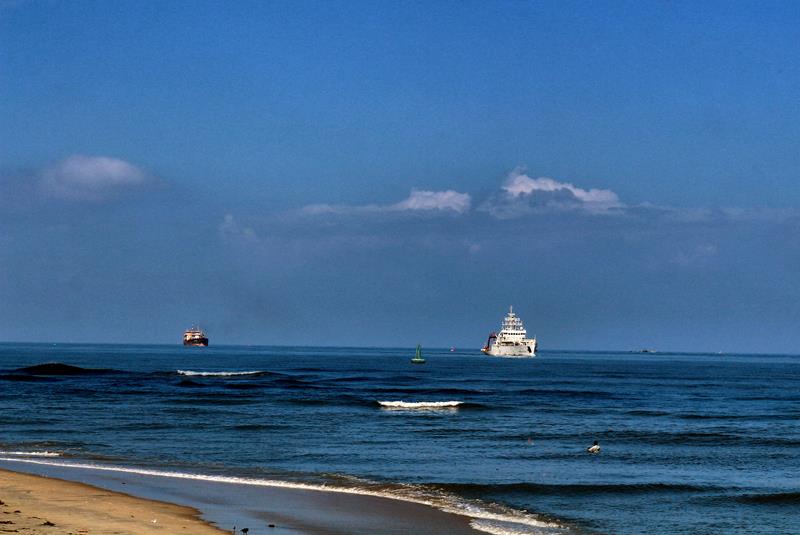
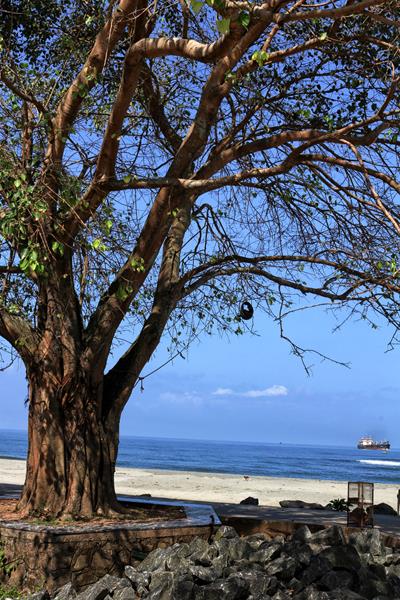
We had one of the nicest morning teas from a Thattu Kada (street food vendor). Got back to the homestay and freshened ourselves, and after my shower… I walked down the lanes of Fort Kochi and got some interesting pictures of the streets, some churches, birds going about their morning food gathering, and some interesting people too.
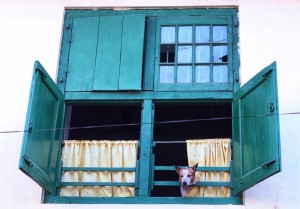
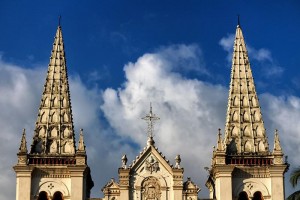
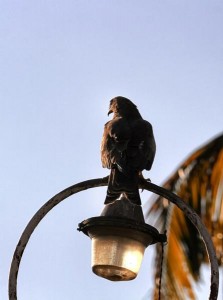
For breakfast, we went to posh bakery/restaurant next door… a huge group of westerners followed us and the poor waiter could not handle the crowd. We left the place and went back to the Thattu Kada (street vendor) and had a sumptuous breakfast of Puttu, Kadala, Nool Puttu, Velaiappam, Pathiri (all Kerala’s native breakfast items), and tea. My friend remarked it just cost us one continental breakfast in that bakery/restaurant.
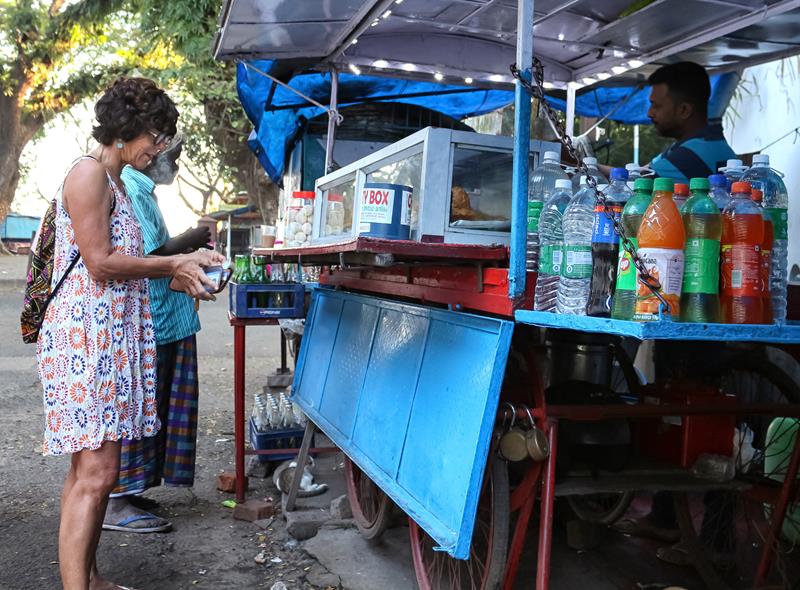
We came across the residents and tourists using the humble bicycle. We were not aware of the fact that bicycles were rented out. Came across some tourists riding bicycles and enjoying the very act of riding one. It is very advisable to see sights in Fort Kochi on a bicycle and connect with our inner child.
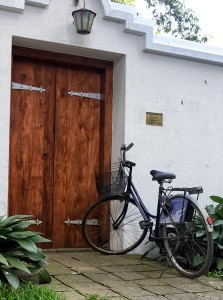
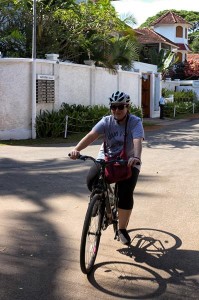
After the satisfying breakfast, we went over to the St Francis Church and we were amazed at the architecture and the sheer history of this place, being the first European church built in India.
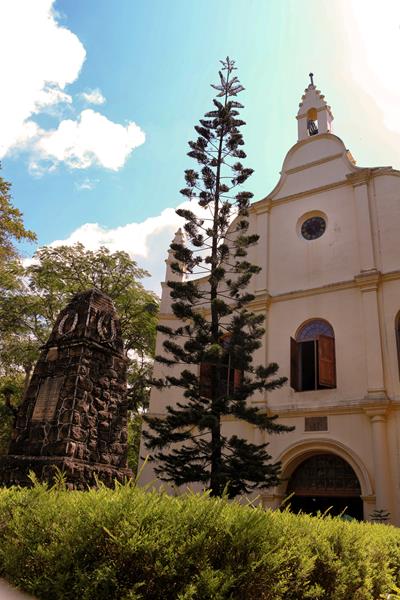
St. Francis Church – The St. Francis Church is believed to be one of the oldest churches built by the Europeans in India and was originally built in 1503. The church witnessed various European invasions and during the Dutch invasion of Kochi in 1663, it came under their possession. In 1804, the Dutch surrendered the church to the Anglican Church following the British invasion of Kochi in 1795. The church was renamed and renovated in 1886. The Church of South India (CSI) took over the administration and management of the church in 1949. The church has a lofty structure with a gabled timber framed roof covered with tiles. There is also a cenotaph and it was built in 1920 in remembrance of the Kochiites who laid down their lives in World War I. Vasco da Gama died on his third visit to Kochi and was buried in this church for 14 years and the remains were taken back to Portugal.
It was about 10:30 am and we went back to the homestay and checked out, and drove back to Thrissur happy with the impromptu visit to Fort Kochi. Our trip was full of unexpected moments and sights, great street food, and meeting lots of wonderful people. Fort Kochi has always been a bohemian and cosmopolitan town with its mix of locals, traders, and tourists, a true melting pot of cultures.
Factual Text source: Kerala Tourism website, Wikipedia and other web sources.
Pictures by: Sastha Prakash for http://realindia.in/
